It’s an exciting time to be out now looking for our autumn orchids which are responding to the rain we have had—very different to this time last year.
The tiny Parsons Bands, all three local Midge Orchids and the Large Autumn Greenhoods are all appearing.
The Friends of Eastern Otways weeding group were excited to find a new patch of Parson’s Bands, Eriochilus cucullatus, while weeding near Urquhart Bluff. These tiny white and sometimes pink flowers have two obvious downward pointing sepals giving them their common name as they look somewhat like a parson’s collar. The hairy labellum is recurved, and the dorsal sepal is hooded and bordered by two tiny linear petals. The ovate leaves are not visible at this time but develop later and remain after the flowers have died off. They are popping up in many heathy woodland sites now. Look carefully for these dainty flowers as you walk through these areas.
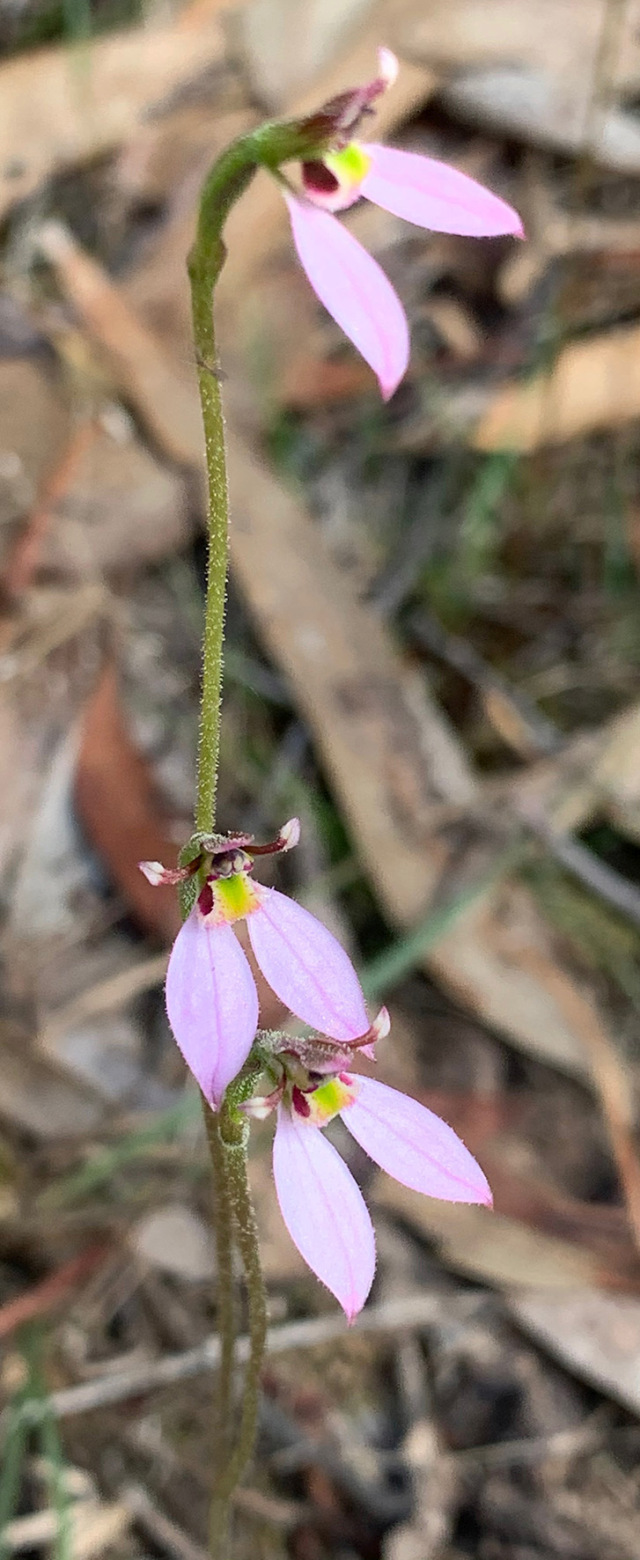 Parsons Band
Parsons Band
The Midge Orchids have had a wonderful flowering season with just so many specimens appearing in their known habitats. The Sharp Midge Orchid, Corunastylis despectans, was the first species to appear. Although one of the most widespread and common Midge Orchids in Victoria, it is considered very rare in our district as it is only known from one site on Bald Hills Road. Difficult to find, it is small and blends in with grasses and other plants. For this reason, it could easily grow in other sites undetected by us at this stage.
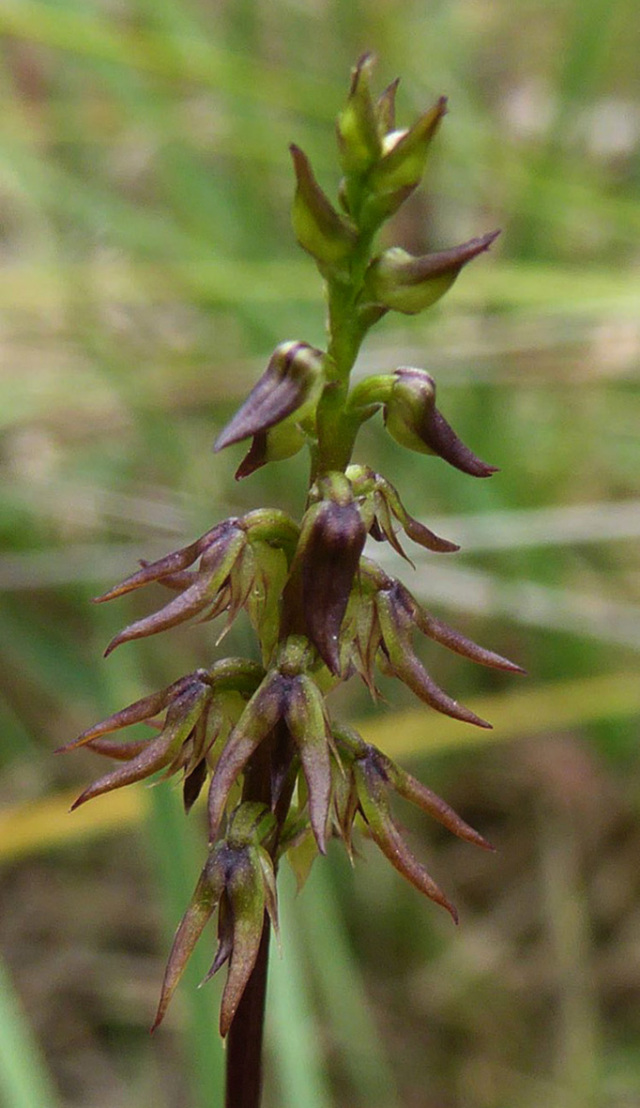 Sharp Midge Orchid
Sharp Midge Orchid
The Bearded Midge Orchid, C. morissii, with its maroon colourings and feathered labellum, and the Fringed Midge, C. ciliata, with its yellowish-green flowers and fringed red labellum, have put on a magnificent display this autumn. A recent count along Forest Road resulted in well over 300 flowering Bearded and Fringed Midge Orchids intermingled with each other—the best numbers seen in years.
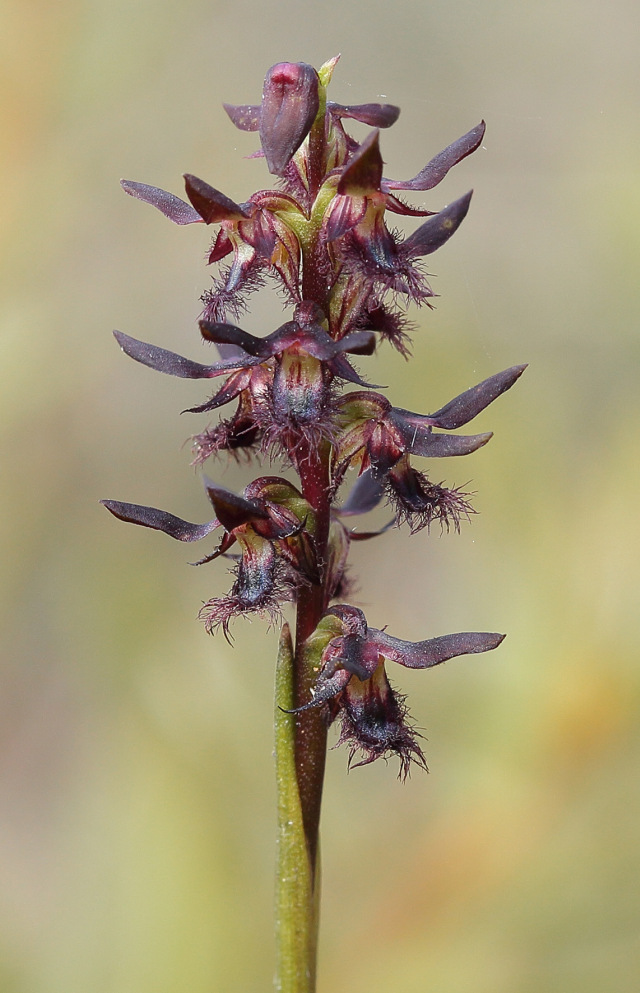 Bearded Midge Orchid (photo by G. Lee)
Bearded Midge Orchid (photo by G. Lee)
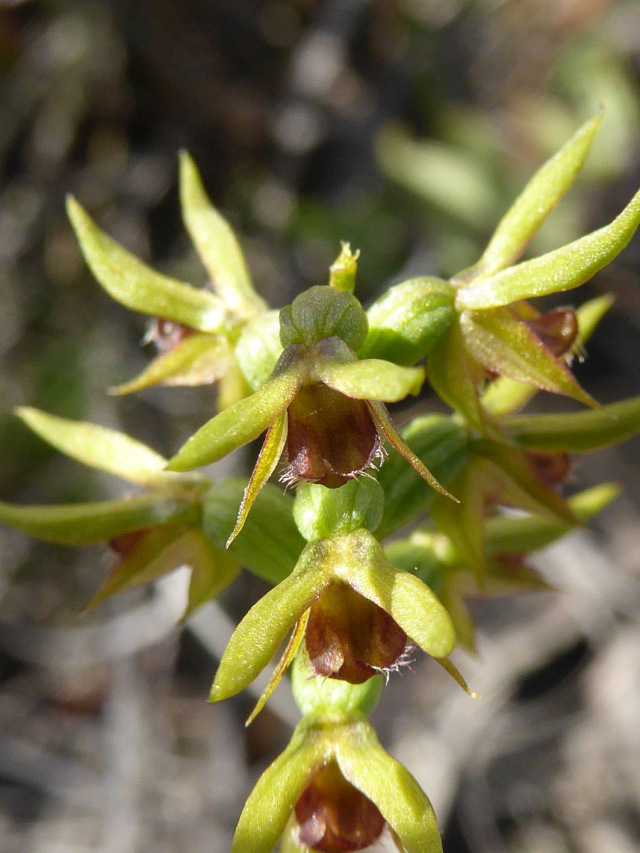 Fringed Midge Orchid
Fringed Midge Orchid
The Large Autumn Greenhood, recently given its own species name, Pterostylis ampliata, (formerly sp. aff. revoluta), flowered strongly in Aireys Inlet with some large colonies, but unfortunately on private land. However, it was exciting to see that the small colony that Everett Foster and Marg MacDonald translocated into the Greenhood Reserve at Aireys Inlet many years ago has continued to survive with four flowering specimens and two rosettes appearing at this stage. This orchid has large distinguished flowers with long curved petals and sepals ending with a long slender point and a sharply pointed, protruding labellum which extends from the V-shaped frontal opening. Flowering specimens do not have a rosette, while non-flowering plants form a ground-hugging rosette.
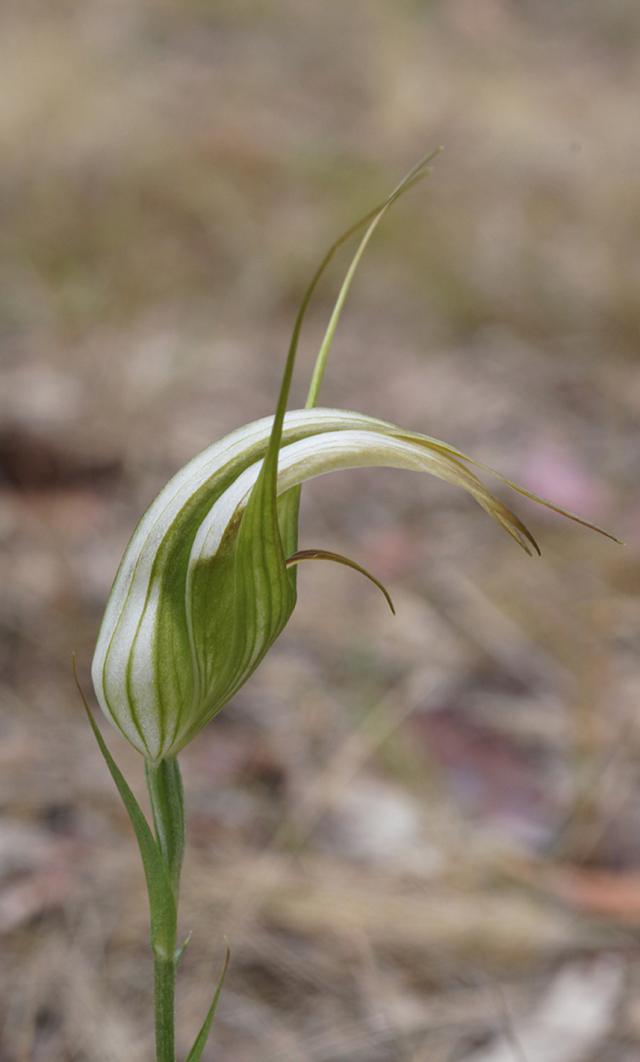 Large Autumn Orchid
Large Autumn Orchid
These orchids are rare in our district and it would be nice to know if there are other colonies around. We know of very small numbers near Allardyce Track off Gum Flat Rd.
Also starting to appear are the Brown-tipped Greenhoods, Pterostylis clivosa, and the Tiny Greenhood, P. parviflora. Mosquito Orchids, Acianthus pusillus, are forming buds.
Please let us know of your orchid finds—margmac@iprimus.com.au
In this uncertain world it is nice to know that our orchids are continuing to do well!
These orchids are all documented and photographed in Orchids of the Anglesea District available from Angair.
Alison Watson and Margaret MacDonald